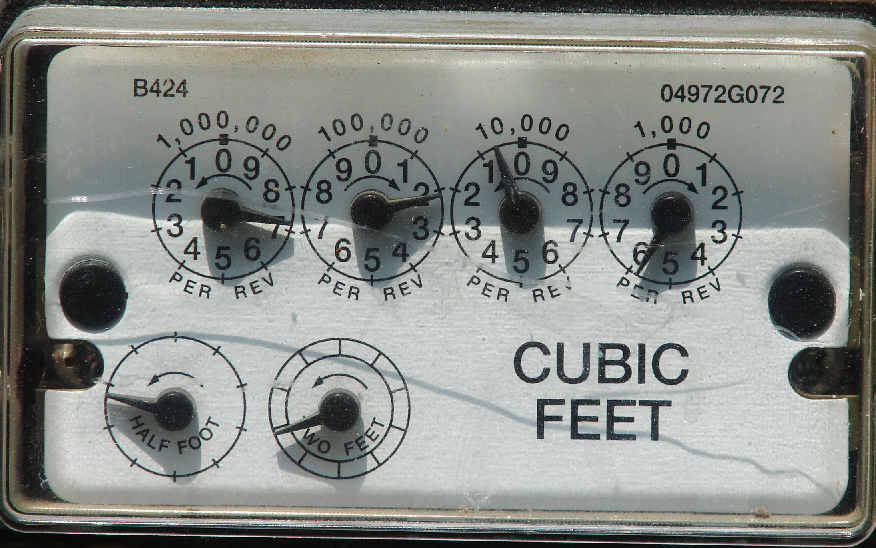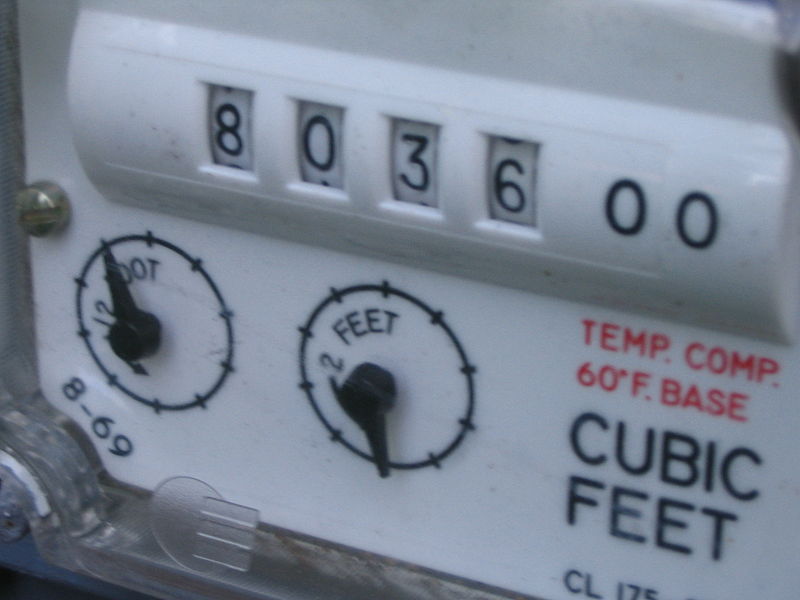Types of gas meters
To measure your gas consumption, your utillity company needs to read your gas meter on a regular basis. Here we explain what types of gas meters exist and how they work.
| Summary |
|---|
What does a gas meter do?
A gas meter is a tool that constantly counts the gas you have used in your home. It is much like the mileage display in your car that shows you the distance you have used. On a gas meter, the actual number you read on the display is not very important. You must make 2 reading at 2 very specific moments of the day, week, month or year, and the difference between both readings will be the amount of gas you have used between both moments.
In what units does a gas meter measure?
On your gas bill, you will see your gas consumption in therms. This is a measure of energy. Nevertheless, gas meters cannot measure energy directly, they can only measure the volume of consumed gas, and then convert it to energy. The volume of gas consumed is measured in CCF (Centum Cubic Feet). Then, knowing what 1 CCF of natural gas typically produces in Therms, you can calculate your consumption in Therms.
If your first meter reading is 8116 (CCF), and the next one is 8120 (CCF), then the volume of natural gas you have used in the time between both readings is 8120 - 8116 = 4 CCF. Then you must convert it to energy: 1 CCF is equivalent to approximately 1.025 Therms (source eia.gov). This conversion factor may change slightly over time and depending on your location.
Convert CCF to Thems
1 CCF is equivalent to 1.025 Therms
You may also want to write down your meter number. This number is printed under or next to your display, it does not change over time. Some utility companies or suppliers may require you to give them your meter number when signing up for service, signing out, or just managing your account.
Different gas meters
Gas meters may all look globally alike, but the inside mechanisms can be different. Here are the main types of gas meters and their functionning:
Diaphragm meters: these meters are the most widespread in the US. The gas goes through a pump (or a pair of pumps), which contracts and expand as gas passes into the pumps. The pump will be connected to a meter which will count the amount of times the pump contracts and expands, and knowing the volume of the pump's chamber, the counter calculates the volumes which has passed.
Rotary meters: these are able to undergo higher debits and higher pressures. Two rotors are geared together in order not to let any gas through unless they are turning. The rotation of these rotors will indicate how much gas is flowing.
Turbine meters: these meters deduct the volume of gas flowing through the meter by determining the speed at which the the gas is moving through the turbine, using a small turbine or helix.
Orifice meters: these meters are rather simple: they are a straight tube, where in the middle there is an orifice which creates a pressure drop proportional to the flow. If the flow is high, the pressure will decrease, if the flow is low, the pressure will increase. Therefore, by measuring the pressure at the orifice, one can calculate the flow of the gas.
Ultrasonic flow meters: the speed of the gas inside the pipes is measured using ultrasounds. Ultrasonic meters can measure the speed at which sound travels in the gas. The speed of sound in the gas will change if the gas is moving at a certain speed. By measuring this change, one can calculate the speed of the gas.
Coriolis meters: A coriolis meter is a meter which measures the mass flowing through the meter using a physical principle called the Coriolis effect.
These different gas meters will not affect you in any way, apart from the fact that their accuracy may slightly differ. However, what you may want to know, is that within all of these meters, there are 2 different possible displays on meters:
- Analog display meters
- Digital display meters
Meters with analog indicators
Gas meters with analog indicators look like this:

Analog display of a gas meter
How to read your analog gas meter
There is a specific manner to reading your analog meter. It is the same as your analog electricity meter, if you have one (although not the same units of measurement). First you must record the numbers from the left (the 1,000,000 cubic feet dial) to the right (1,000 cubic feet per div). When a dial hand points between two numbers, record the lower number. If the hand points exactly on the number, there are two possibilities:
- If the hand you are looking at is exactly on a number, and the next dial (the one on the next right) is on 9, then the number is actually one digit less. For example, in the image here, the 4th dial (the 10 kWh dial) hand is almost exactly on 7, and the next one is on 9. The actual value of the 4th dial is therefore 6 (and both dials together make 6.9, which is why the 4th hand was so close to the 7).
- On the contrary, if the 2nd dial is on the number 0 and the next dial is on 2 for example, the number will be 0.2.
The bottom 2 dials are for testing only, they are not used to read your meter.
Meters with digital indicators
Digital indicators are displays which show the exact number, without a dial or need for calculation.
How to read your digital gas meter

Reading a digital gas meter is easier.
Reading your digital meter is rather straightforward. The numbers at the top are easy to read. The 2 zeros on the right mean that the number you are reading there is 8,036 CCF, or 803,600 cubic feet. The two dials at the bottom are for testing only, they are not used to read your meter.